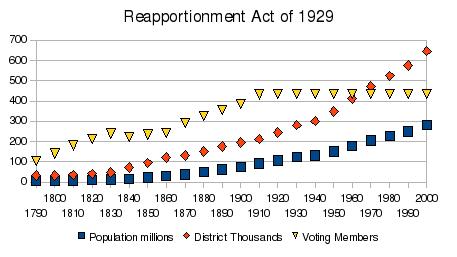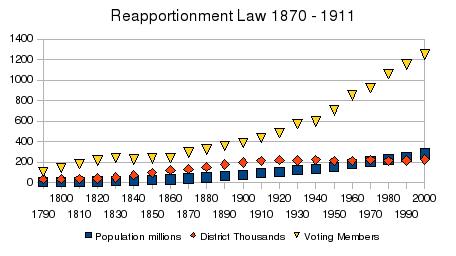 |
That method of deciding the size of the House ended in 1921 when the incoming Republican party, fearing that reapportionment would lose their majority in the Congress, simply refused to pass a reapportionment bill. Then in 1929 the Republicans created The Reapportionment Act of 1929 which did not reapportion anything but which did repealed all statutes concerning single member districts, in effect rescuing the incumbent Congress. The act also limited the House to 435 members. As you can see in the chart at left, this has created electoral districts that are much larger than they otherwise would have been. There has always been adequate basis for condemning such large electoral districts as being much less representative of the people and much more representative of the power elite. |
|


